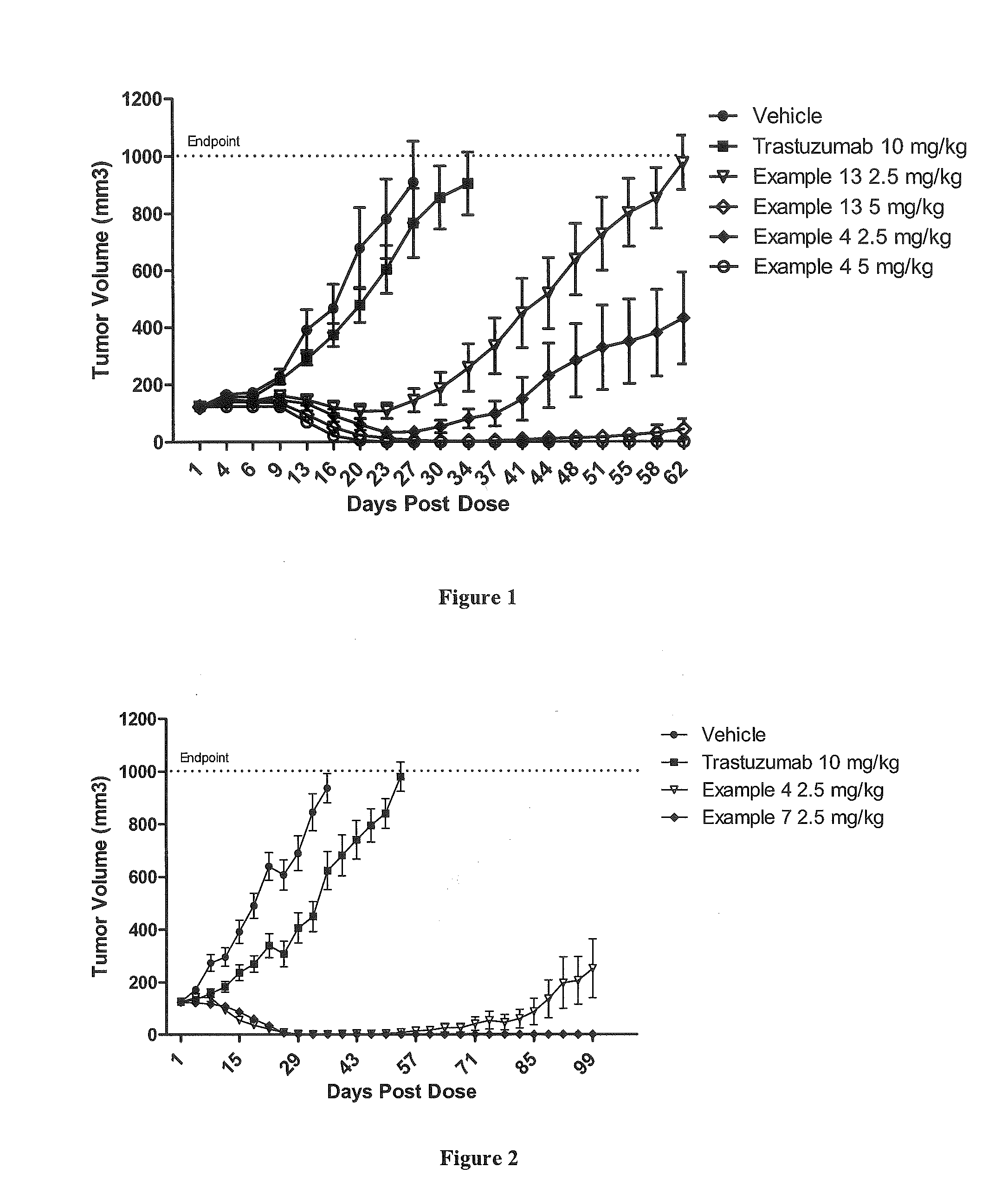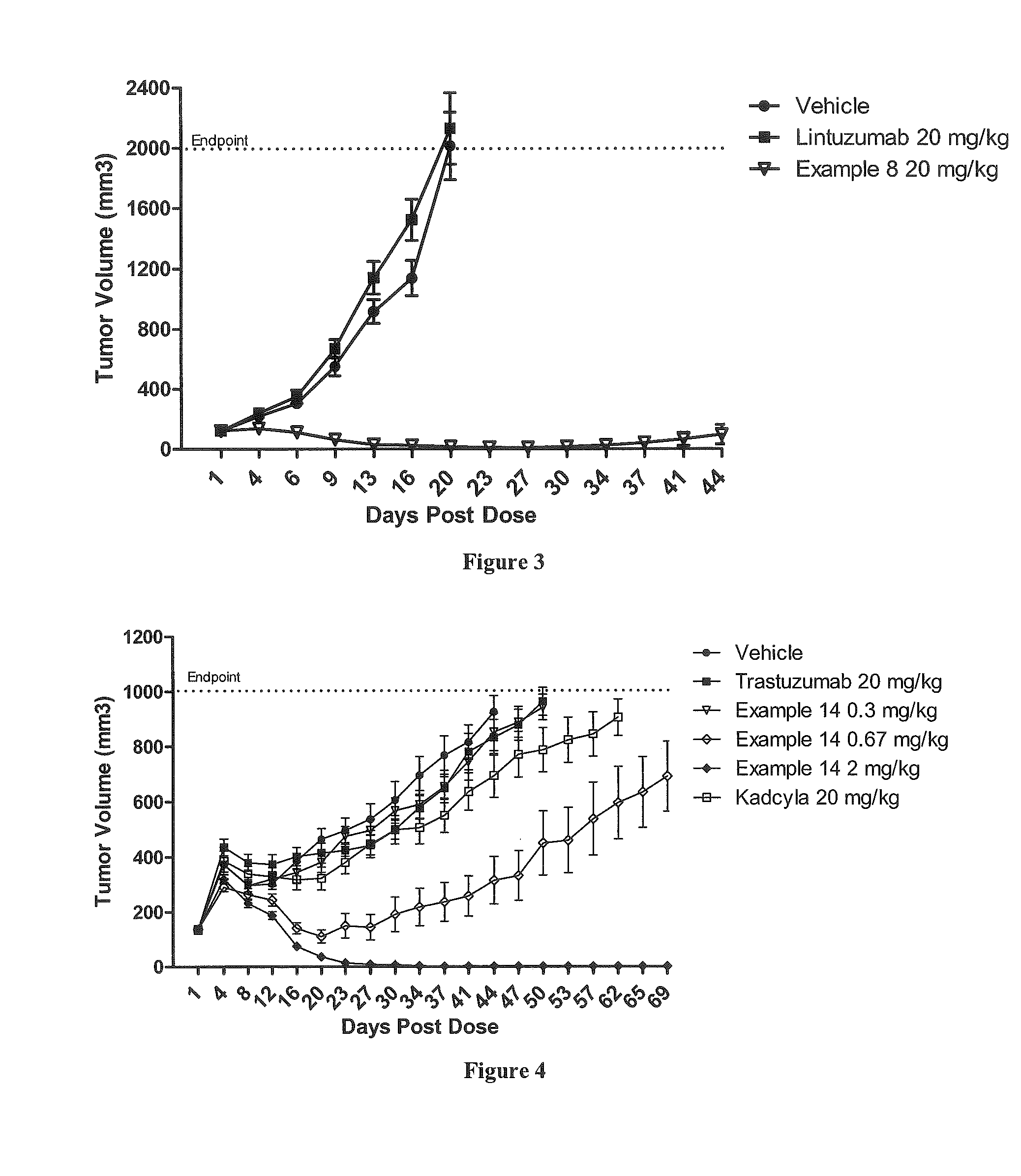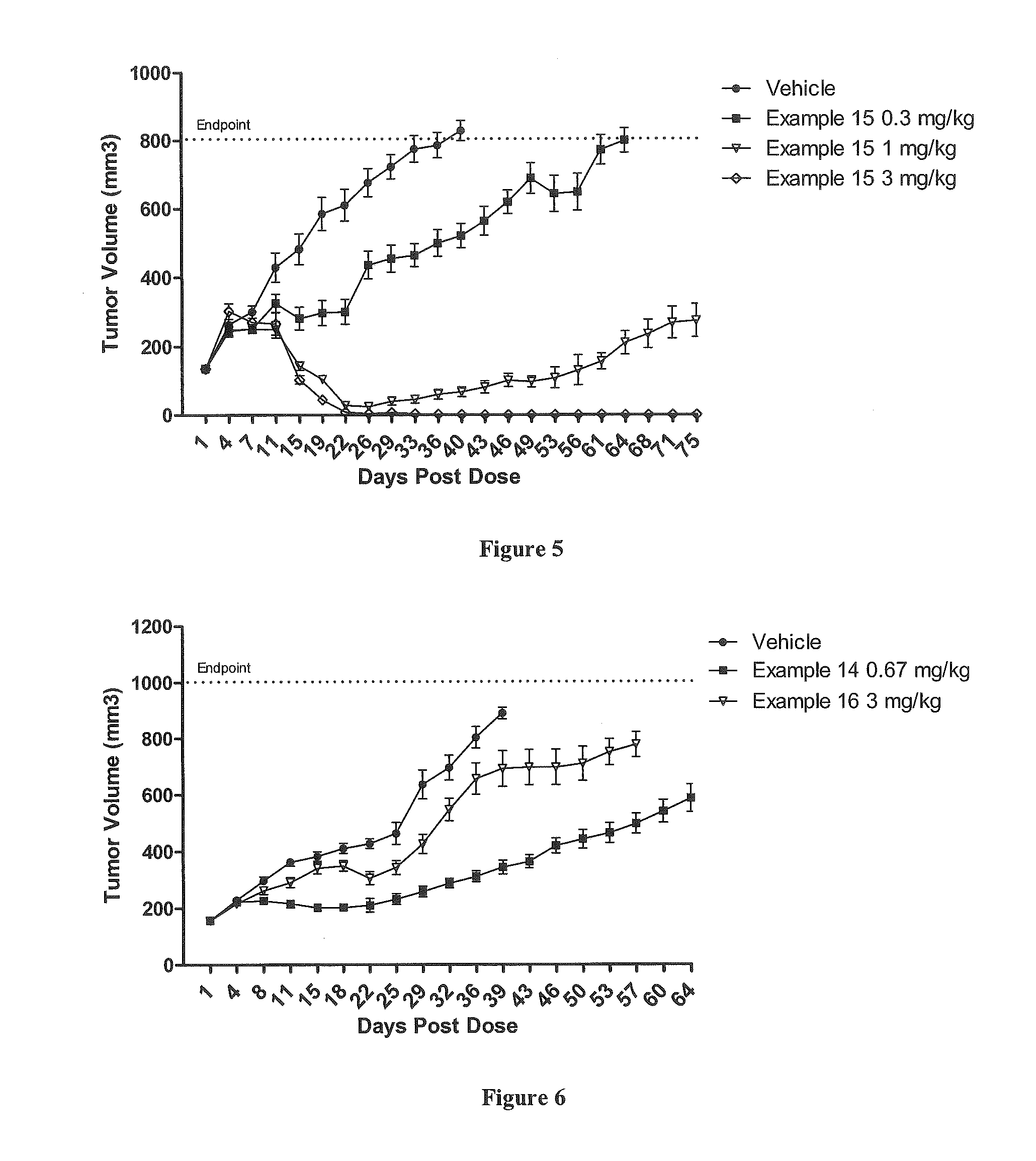Protein-polymer-drug conjugates
a technology of polymer and conjugate, which is applied in the field of protein-polymerdrug conjugates, can solve the problems of increasing the number of forms, increasing the complexity of drugs, and reducing the potency and therapeutic effects of many drugs,
- Summary
- Abstract
- Description
- Claims
- Application Information
AI Technical Summary
Benefits of technology
Problems solved by technology
Method used
Image
Examples
example 1
Synthesis of EG2-maleimide: (O—[N-(3-maleimidopropionyl)aminoethyl]-O′-[3-(N-(2-aminoethyl)amino)-3-oxopropyl]ethylene glycol)
[0861]
[0862]To an ice-cold suspension of maleimido-EG2-NHS ester (O—[N-(3-maleimidopropionyl)aminoethyl]-O′-[3-(N-succinimidyloxy)-3-oxopropyl]ethylene glycol, 1.2 g, 2.82 mmol) and Boc-diaminoethane hydrochloride (560 mg, 2.82 mmol) in ACN (15 mL) was added TEA (0.571 g, 5.64 mmol) drop-wise while stiffing. The resulting mixture was brought to room temperature and the stirring continued overnight at room temperature. Additional BOC-diaminoethane hydrochloride was added (110 mg) to drive the reaction to completion. The reaction mixture was concentrated under vacuum and the residue purified on RP-HPLC (0-100% ACN in water) to give Boc-diaminoethane-EG2-maleimide as a colorless solid (1.18 g, 89% yield). ESI MS: calculated C21H35N4O8 [M+H+] 471.3; found 471.2.
[0863]The Boc-diaminoethane-EG2-maleimide (1.18 g, 2.508 mmol) was dissolved in a 30% TFA solution in D...
example 2
Synthesis of 10K PHF-BA (30%)-EG2-MI (3%)
[0865]
[0866]To a solution of 10K PHF-BA (30%) (588 mg, 3.46 mmol prepared in a fashion similar to that as described in U.S. Ser. No. 13 / 493,899, now U.S. Pat. No. 8,685,383, Example 1) in water (10 mL) was added a solution of EG2-maleimide (102 mg, 0.211 mmol, prepared in a fashion similar to that as described in Example 1) in water (5 mL) followed by the addition of N-hydroxy-succinimide (NHS, 25 mg, 0.211 mmol). The resulting mixture was cooled to 5-10° C., and the pH was adjusted to 5.8 (from 5.3) using 0.1N NaOH solution. Then EDC.HCl (94 mg, 0.486 mmol) in water (2 mL) was added to the reaction mixture over 40 minutes. The reaction mixture was brought to room temperature and the stiffing continued at room temperature for 18 hours. The resulting product was purified by diafiltration on 3K MWCO membrane and lyophilzied to give the title compound as an off-white solid product (0.460 g, 71% yield).
[0867]1H-NMR (400 MHz, D2O): 6.9 ppm (broad ...
example 3
Synthesis of 10K PHF-BA (30%)-EG2-MI (3%)−AF-HPA-Ala (8%)
[0868]
[0869]A homogeneous solution of 10K PHF-BA (30%) EG2-MI (3%) (144 mg, 11.08 μmol, prepared in a fashion similar to that as described in Example 2) in water (4.2 g) was chilled to 5-10° C. The pH of the solution was adjusted to 5.8 using 1N HCl, followed by addition of Auristatin F-hydroxypropylamide-L-Alanine.2TFA (AF-HPA-Ala.2TFA) (85 mg, 77.52 μmol, prepared in a fashion similar to that as described in U.S. Ser. No. 13 / 493,899, now U.S. Pat. No. 8,685,383, Example 50) dissolved in NMP (1.4 mL) and NHS (16 mg in 0.5 mL water). The mixture was stirred vigorously at 5-10° C. and the pH of the solution was adjusted to 5.8 with 0.1N NaOH. To the resulting mixture was added a freshly prepared aqueous solution of EDC.HCl (30 mg in 0.5 mL water). After 45 minutes additional EDC.HCl (30 mg in 0.5 mL water) was added and the resulting mixture was stirred for 18-24 hours while maintained the pH at 5.8. The RP-HPLC analysis of the...
PUM
| Property | Measurement | Unit |
|---|---|---|
| Atomic weight | aaaaa | aaaaa |
| Atomic weight | aaaaa | aaaaa |
| Atomic weight | aaaaa | aaaaa |
Abstract
Description
Claims
Application Information
 Login to View More
Login to View More - R&D
- Intellectual Property
- Life Sciences
- Materials
- Tech Scout
- Unparalleled Data Quality
- Higher Quality Content
- 60% Fewer Hallucinations
Browse by: Latest US Patents, China's latest patents, Technical Efficacy Thesaurus, Application Domain, Technology Topic, Popular Technical Reports.
© 2025 PatSnap. All rights reserved.Legal|Privacy policy|Modern Slavery Act Transparency Statement|Sitemap|About US| Contact US: help@patsnap.com



